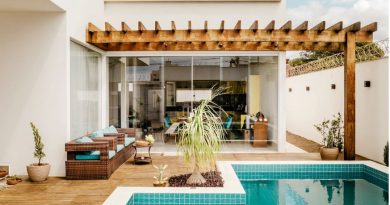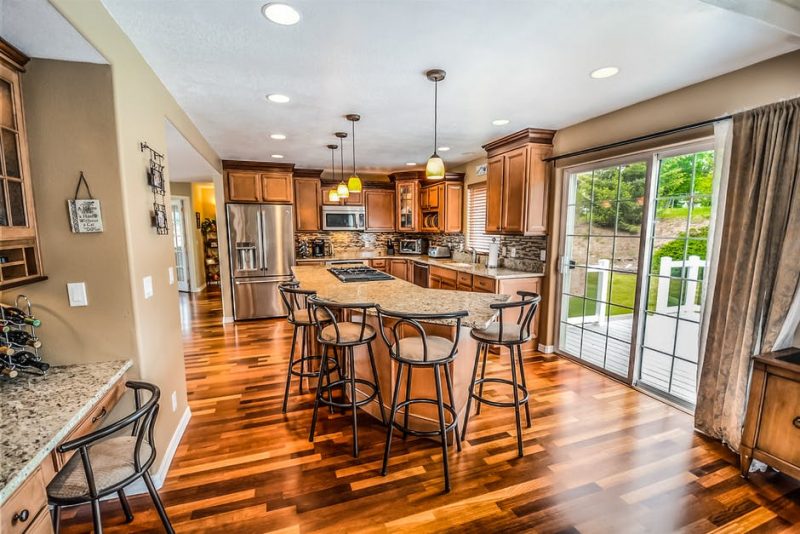5 Benefits of Artificial Turf
Fake grass, often known as artificial grass or synthetic turf, is a synthetic fiber-based surface that is intended to resemble natural grass. It is frequently used in landscaping, sports fields, and other areas where a natural grass surface is required but actual grass is problematic due to upkeep or environmental issues.
Faux grass is often laid over a layer of compacted crushed rock or sand and is constructed of synthetic materials such as polyethylene or polypropylene. It is commonly utilized in high-traffic areas since it is more resilient than natural grass and does not require frequent watering or mowing.
Below we explore some of the biggest benefits of having fake turf over real grass.
Contents
#1 More Friendly to the Environment
Artificial grass can be more environmentally friendly than natural grass in a variety of ways.
- For starters, it does not require watering, which can save a large quantity of water in locations where water is scarce.
- Second, it does not necessitate the use of pesticides or fertilizers, reducing the amount of chemicals introduced into the environment.
- Furthermore, compared to the manufacture and shipping of natural grass, artificial grass takes fewer resources and produces fewer greenhouse gas emissions.
- Finally, in regions where natural grass is difficult to grow owing to environmental factors, the use of artificial grass can aid in habitat preservation by eliminating the need to maintain a natural grass lawn.
It’s important to note that the environmental benefits of artificial grass differ depending on the product and the conditions in which it’s employed.
#2 Fake Grass Save Money in the Long-Run
Artificial grass has a number of long-term financial benefits, including the fact that it doesn’t require watering, which can result in large water bill savings, especially in locations where water is expensive or scarce.
Because fake grass does not require mowing, fertilizing, or pesticide treatment, it can reduce the expense of landscaping and maintenance. Furthermore, artificial grass lasts longer than natural grass, requiring less replacement over time, which lowers long-term installation and replacement costs.
Last but not least, adding artificial grass to a property occasionally raises its value, which can be profitable. It’s important to keep in mind that the actual cost savings from artificial grass may vary based on the product, the environment in which it is utilized, and the local maintenance and water requirements.
#3 Pets Love Faux Turf
For pets, artificial grass can offer a number of advantages. Pets won’t track mud into the house or yard because it doesn’t get muddy or damp. Pets are less likely to contract fleas when playing or relaxing on the surface since it is unfriendly to fleas and other parasites.
Artificial grass also makes it simpler to have a clean and hygienic environment for pets because it is simple to clean and does not retain scents. It is also free of toxins that might damage pets and is constructed from non-toxic materials.
Last but not least, artificial grass is a surface that can be used in any weather and is always available, making it particularly useful for pets who need to be exercised or let out frequently. Overall, pets can enjoy a clean, safe, and comfortable environment thanks to artificial grass.
#4 No Pesticides
Pesticides should not be used on artificial grass for a number of reasons. First off, removing pesticides from fake grass lowers the danger of exposure to these chemicals because they can be detrimental to people and animals if consumed or absorbed through the skin.
Second, pesticides may harm beneficial insects and contaminate streams, among other unfavorable effects on the ecosystem. The harmful effects of these chemicals on the environment are lessened by banning their use on fake grass.
Last but not least, insecticides can leave a residue on grass that may be ugly and smell bad. The artificial grass is kept clean and odor-free by not using them on it. Overall, the absence of pesticides in artificial grass can have positive effects on the environment, human health, and aesthetics.
#5 No Mud or Dead Grass
On synthetic lawns, the absence of mud and dead grass can provide a number of advantages. Grass looks clean and well-kept if it is devoid of muddy and dead spots, which improves the property’s overall attractiveness.
Eliminating these sources of bacteria helps provide a cleaner and safer environment for people and pets. Dead grass and mud can harbor bacteria and other diseases that can be dangerous to humans and pets.
Maintaining a synthetic lawn that doesn’t get muddy or covered in dead grass is simpler and takes less time and work to keep looking nice.
People with busy schedules or those who don’t want to spend a lot of time on lawn care may find this to be very useful. In general, the absence of muck and dead grass on synthetic lawns can be attractive, healthy, and practical.





